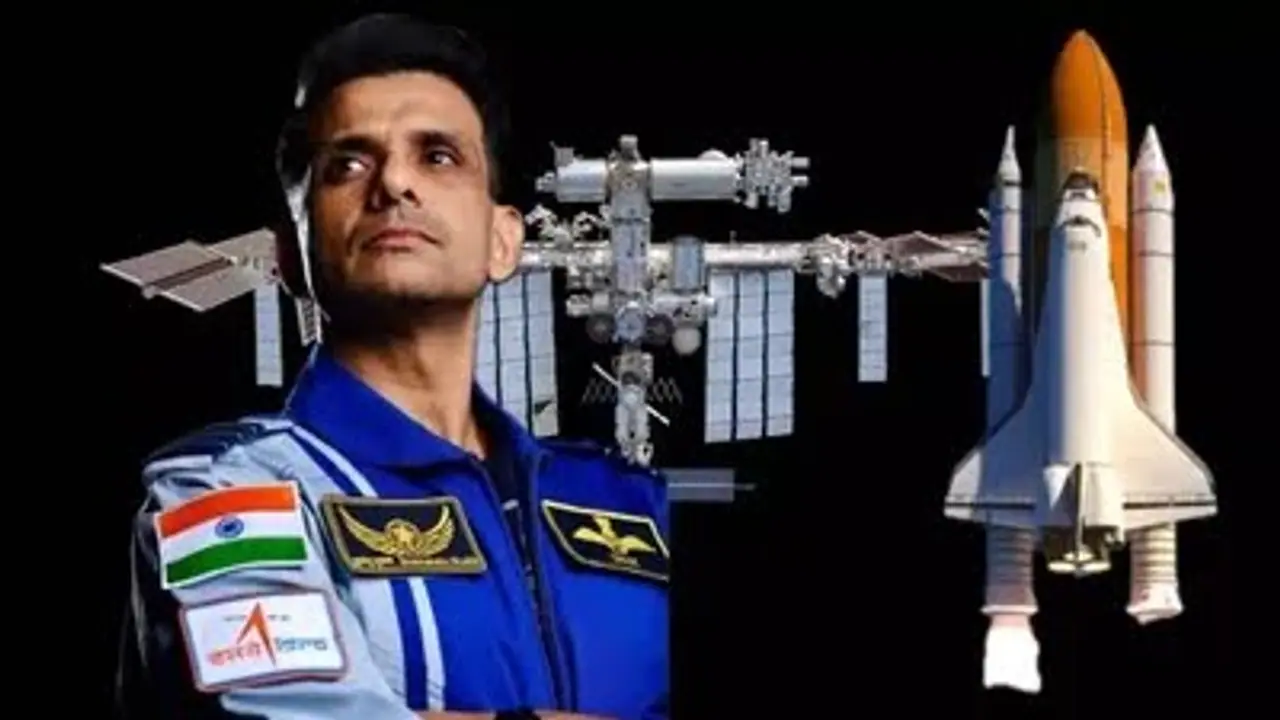Mission to the International Space Station (ISS) is a proud moment for India, as Group Captain Shubhanshu Shukla, an Indian Air Force pilot, becomes the first Indian astronaut to visit the ISS.
On June 8, 2025, India will write a new chapter in its space saga with the Axiom-4 mission, launching from NASA’s Kennedy Space Centre in Florida. This mission to the International Space Station (ISS) is a proud moment for India, as Group Captain Shubhanshu Shukla, an Indian Air Force pilot, becomes the first Indian astronaut to visit the ISS. He follows Wing Commander Rakesh Sharma, India’s first astronaut, who flew in 1984. But why is Axiom-4 so significant for India? Let’s explore in simple terms.

The Axiom-4 mission marks India’s return to human spaceflight after 40 years. In 1984, Rakesh Sharma, then a Squadron Leader, became the first Indian in space. He flew aboard the Soviet Union’s Soyuz T-11 spacecraft, launched from Baikonur Cosmodrome, Kazakhstan, on April 3, 1984. Sharma spent 7 days, 21 hours, and 40 minutes aboard the Salyut 7 space station, orbiting Earth with Soviet cosmonauts Yury Malyshev and Gennadi Strekalov. He conducted 43 experiments in bio-medicine and remote sensing, studying the heart in zero gravity and photographing over 60% of India’s land with multi-spectral cameras, saving years of mapping. Sharma also tested yoga in space to combat space sickness, a novel experiment. His words, “Sare Jahan Se Accha,” responding to Prime Minister Indira Gandhi, echoed national pride.
Salyut 7, where Sharma worked, was a Soviet space station, much smaller and simpler than the ISS. Launched in 1982, it was about 15 meters long, with limited space for three crew members. It had basic labs for experiments and was designed for short missions, hosting cosmonauts for up to 237 days. The ISS, however, is a massive, football-field-sized station, built and operated by 15 nations, including the US, Russia, and Japan. Orbiting since 1998, it supports six to seven crew members for months, with advanced labs for diverse experiments, solar power, and living quarters. Unlike Salyut 7, the ISS is a global hub for long-term space research.
Axiom-4 is a reminder of India’s growing space ambitions, building on successes like Chandrayaan and Mangalyaan. Shubhanshu Shukla, piloting alongside astronauts from the USA, Poland, and Hungary, carries India’s flag to the ISS. His journey shows India’s ability to compete with global space powers, highlighting our technical skill and resolve.
The mission is a stepping stone for India’s Gaganyaan mission, the first manned spaceflight planned for 2026. Axiom-4 helps the Indian Space Research Organisation (ISRO) learn about astronaut operations, microgravity experiments, and mission safety. ISRO’s ₹550 crore investment supports seven Indian experiments, like growing fenugreek (methi) and green gram (moong) in space, aiding food production for future missions, including India’s planned space station by 2035.
Axiom-4 is also about international collaboration, involving ISRO, NASA, Axiom Space, and the European Space Agency. This strengthens India’s ties with the US, building on a 2023 space agreement during Prime Minister Narendra Modi’s visit. Such partnerships let Indian scientists work with global experts, bringing advanced technology home.
The mission’s 60-plus experiments focus on human health, life sciences, and Earth observation. Indian studies on algae growth and waste recycling in space could improve agriculture and sustainability in India. These experiments show how space research benefits life on Earth.
For young Indians, Shukla’s journey is inspiring. Picture a child in a village watching him do yoga in space or speak to students via a live ISS link. ISRO and NASA’s public event, where Shukla answers student questions, makes space feel closer. This mission is for every Indian dreamer.
Axiom-4 showcases national pride. As a developing nation, India competes with giants like the US and China. Shukla’s role as mission pilot highlights our armed forces and scientists’ dedication, proving India achieves greatness when determined.
Despite challenges, like a recent ISRO satellite launch failure, Axiom-4 shows India’s resilience. Each mission strengthens ISRO’s space programme.
Ultimately, Axiom-4 is about India’s dreams, scientific spirit, and global role. As Shubhanshu Shukla soars to the ISS, he carries the hopes of 1.4 billion Indians, just as Rakesh Sharma did in 1984. This mission is a bold step toward a future where India shapes space exploration. Let’s cheer for this stellar leap—a moment of pride for us all.
(Girish Linganna is an award-winning science communicator and a Defence, Aerospace & Geopolitical Analyst.He is the Managing Director of ADD Engineering Components India Pvt. Ltd., a subsidiary of ADD Engineering GmbH, Germany. Contact: girishlinganna@gmail.com)
Disclaimer: The opinions expressed are solely those of the author and do not reflect the views or stance of the organization. The organization assumes no responsibility for the content shared.


